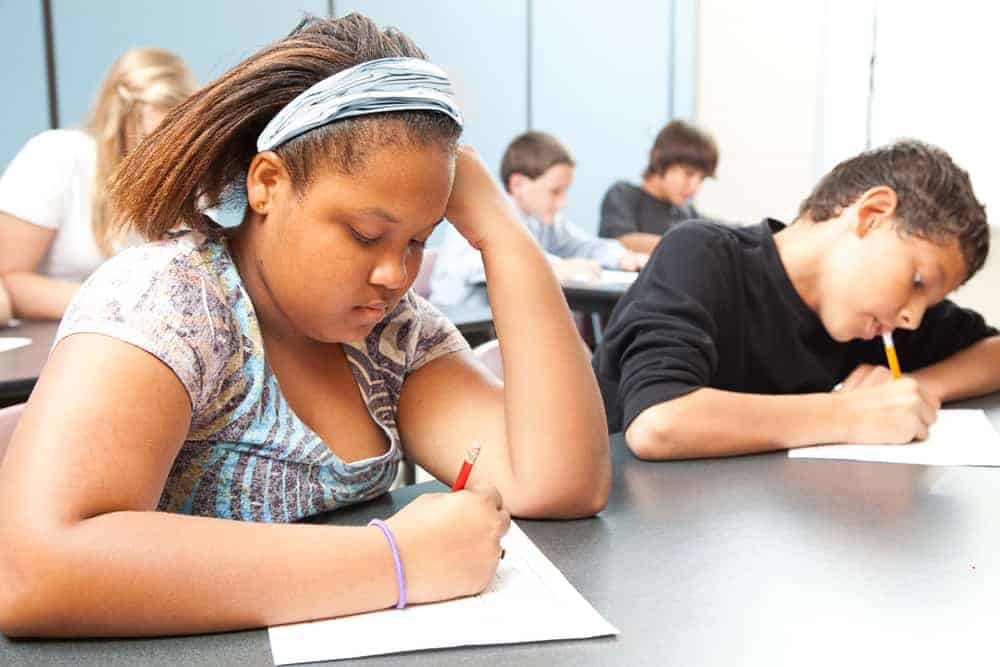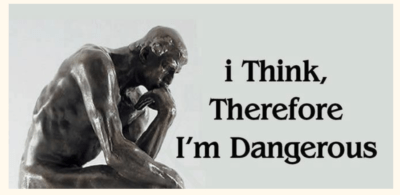My son came home from school one day and told me, “Mom, my teacher is mad at me.” I was immediately wondering if he had acted out in some way during class, which was not typical of him.
I asked him, “Why?” and he said, “We had a pretest today in math and I got a 100.” I said, “Well, that’s awesome. So why is she upset with you?” He said “I’m not really sure. She just said she couldn’t show growth, and asked what was she going to do with me. She seemed really upset… maybe I shouldn’t do so well in class.”
Now, I can honestly say I was floored. I wasn’t sure which angle to come at this conversation from, teacher or parent. The parent in me was highly upset. The teacher in me was even more upset. Why does this teacher feel the need to say something about growth to a nine year old who clearly doesn’t understand what she is talking about? If I wasn’t a teacher myself, then the parent in me probably wouldn’t understand either. But, I am a teacher, and I do understand.
As I teacher, I couldn’t be upset with her; I am upset with the state. I am upset that my child only has 15 to 20 minutes of recess each day to unwind and recharge. I am upset that our students feel like they are a “test score.”
I understand that we have been told that students must be proficient in all subjects. We have been told students must show growth in all subjects. While I am not against the fact that students need to grow and show that they have mastery in a content area, I am upset at how the state has gone about trying to show this on a piece of paper. A piece of paper that does not show that my son helps others in his class, that he shows empathy towards others, that he won the art award this past semester, and that he loves soccer and to read.
I am upset that students are pushed through the school day with only the end game in mind: a test. A test that will prove I am teaching the content is not the problem. The problem is it isn’t one test, it is many tests.
“I’m not really sure. She just said she couldn’t show growth, and asked what was she going to do with me. She seemed really upset…maybe I shouldn’t do so well in class.”
According to the website, the North Carolina State Board of Education and the use of State-Designated Assessments for the North Carolina Teacher Evaluation Process policy that took effect on 12/7/2017, the following assessments are considered standardized artifacts reflective of student growth for teachers and school growth for participants in the Teacher Evaluation Process:
- End-of-Grade English Language Arts/Reading (grades 3–8)
- End-of-Grade Mathematics (grades 3–8)
- End-of-Grade Science (grades 5 and 8)
- End-of-Course NC Math 1
- End-of-Course English II
- End-of-Course Biology
- NC Final Exams
- K–3 Checkpoints
- Career and Technical Education State Assessments
- Locally Developed Processes for Measuring Student Growth
In many counties across the state, fourth grade now has three NC Math Check-ins made by the state to be taken at the end of each nine weeks. These tests replaced the district-made benchmarks and are taken on students Chromebooks (in schools that have them available). They will also take the Math EOG at the end of the year, as well as a reading EOG.
Fifth grade has three ELA NC Check-ins that have also replaced district-made benchmarks and are taken on Chromebooks. At the end of the year, they too will have an ELA EOG. In math, fifth grade students also have three math NC Check-ins that also replaced district made benchmarks and are taken on Chromebooks, as well as an EOG in math. Science for fifth grade has three county-made benchmarks at the end of each nine weeks, as well as an EOG in science on Chromebooks.
The tests considered standardized artifacts reflective of student growth for teachers and school growth that are stated above do not include pre-assessments, post-assessments, or formative assessments that students take throughout the year in each subject. They also do not include the PSAT that is administered to every 10th grade student. the ACT which is administered to all 11th grade students, the SAT which students must take in order to attend a university in North Carolina, or the optional ASVAB if students have the desire to be in the military.
“My students are enrolled in a modified curriculum from the state. It is a very diverse group with IQs ranging from 65 to 90. Even though they are in a modified curriculum, the students have to take the EOC for Math I, English II, and Biology. The test does not count as a percentage of their grade like everyone else, but they have to sit through and test on a test they aren’t even taught the curriculum to. It hurts my heart to think of the things that are going through their minds while they are testing. Not only do they have to take the test — but their test scores count against us (as a school). This is unfair on many levels.” -Tammy Cooper, Exceptional Children teacher
Don’t get me wrong, I believe we should see data that a student has learned the content that they were taught. I also believe in holding teachers accountable for teaching the content that they are required to teach. The issue is with the excessive testing throughout the course of a year for each student and the time for each test.
Every EOG for third through eighth grades are three hours long but can extend up to four. Imagine an 8-year-old sitting still and silent for three to four hours. Each EOC (Biology, Math I, and English II) is 150 minutes, but can extend up to 240. The administration time for all North Carolina Final Exams (elementary, middle, and high school) is 120 minutes. North Carolina Final Exams are given to subjects that do not have an EOC. This means each high school student that takes eight classes a year on a block schedule could take that many North Carolina Final Exams.
No administration of an NC Final Exam may exceed 120 minutes, and each exam must be administered in one school day (except for students with documented special needs requiring accommodations, such as scheduled extended time and/or multiple testing sessions). The 120-minute administration time does not include time for general instructions and breaks. It should be noted that the administration of North Carolina Final Exams are optional for charter schools.
Critics, including some parents and teachers, said the focus on exam results led to an over-emphasis on preparing students for standardized tests. In an article written by Justin Parmenter, a 7th grade ELA teacher at Waddell Language Academy, students are immersed in tests that measure the wrong thing.
He states, “One problem with the current system is that the score of a single multiple-choice test is subject to a whole host of factors which can lead to an inaccurate measure of the student’s abilities. These factors can include test anxiety, unintentional cultural bias of testing items, lack of support at home, and health and rest of the student on the day of the test.”
If you were to ask any teacher, they would probably state the same thing. I have had a student who had an “A” average all throughout the course, who worked hard and excelled in the subject and who still earned a “C” on her chemistry final exam given by the state due to being upset that her grandmother had passed away the night before. I have seen students so nervous that they literally throw up in the hallway.
This is not only an issue in my school, which is a high school, but all over the state as students feel the pressure that is placed on them to excel at these tests. Students often feel overwhelmed and are pushed not to be absent on testing days even if they are ill and not able to perform at their highest ability. This is not only frustrating to the students and parents, but to the teachers who are upset that they are feeling as though they are judged by one single test taken in a few hours after spending 185 days with that child and knowing what they are actually capable of.
In another article written by Parmenter, “The cost of doing business in the education world“, he says: “In 2016, North Carolina implemented a reward system for third grade teachers who showed significant growth on standardized tests and high school teachers whose students passed Advanced Placement or International Baccalaureate exams. Under this system of merit pay, which will continue through 2018, third grade teachers compete against each other to get into the top 25 percent for reading test growth. But if the General Assembly’s goal was to increase teachers’ effectiveness by motivating them to dig deep for the ideas they’d been holding back, the plan seems to have backfired.”
Is this what our educational system has come to? We have lost the real reason why a student is in school. They are there to learn, be creative, be innovative, and most of all thrive in social aspects. We, as a state or a nation, cannot begin to assess these characteristics through a multiple choice test while having students sit still for three hours.
While a single test may or may not tell us whether the curriculum has been taught, or if they understand the concepts behind the material presented, it does not show the value of a child’s curiosity of the world around us. It cannot measure the empathy that your student has for others. It doesn’t show that my son sits at home and reads Greek mythology, not because he is told to, but because he wants to. It doesn’t show that he loves to create something new almost every day, be it a new world on a video game, a PowerPoint on bullying, or just a picture that shows us what he loves.
Instead of making students sit for hours on end, why not use the assessments that are given throughout the year? These assessments could be state-guided and done through a database that collects this information to compare at a state or even a national level. Students would not know that they are being constantly measured unlike a standardized test where they sit for hours on end, and it would ease the stress on students, their parents, and their teachers.
My son has been using an online math game called Zearn in his class. He loves to play this, and will even do it at home without really understanding that it is a learning tool. Why can’t we use this data? Student portfolios could be used to show the “whole” child. It would include the artwork that a student has created, a video clip from the school play that they worked hard to perform in, as well as any assessments that were given over the year to show mastery in an area.
These are just a few ideas that could show the growth and proficiency that the state deems necessary without the “one size fits all mentality” of a single test. Every day for a month, I had to remind my son after that pretest day that he should strive to do his best everyday. I had to remind him that is OK to be smart and that there will be a time when he may not ace the pretest, and that’s OK too. I have to remind him that he is not a test score, and you should know also that your child is NOT a test score.



